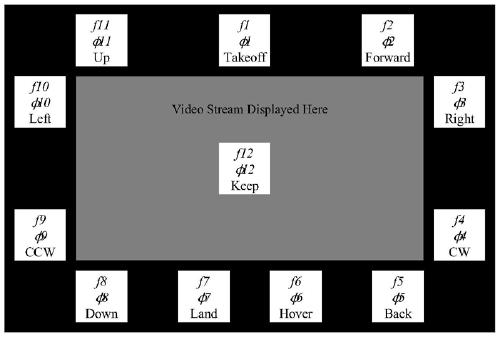Brain-controlled unmanned aerial vehicle method based on steady-state visual evoked potential brain-computer interface
A steady-state vision-induced, unmanned aerial vehicle technology, applied in the field of brain-controlled unmanned aerial vehicles, can solve the problems of inflexible control, inability to realize accurate real-time control, and low transmission rate of brain-computer interface information, so as to improve flexibility and satisfy The Effects of Multimission Operational Requirements
- Summary
- Abstract
- Description
- Claims
- Application Information
AI Technical Summary
Problems solved by technology
Method used
Image
Examples
Embodiment Construction
[0027] In order to make the purpose, technical solution and advantages of the present invention clearer, the implementation manners of the present invention will be further described in detail below.
[0028] The present invention designs a novel SSVEP stimulation interface, which includes N continuously flashing stimulation squares, corresponding to N different flight instructions, and the return video stream of the UAV camera is also embedded in the stimulation interface, and the user can Use it to achieve first-person perspective control.
[0029] Among them, the state maintenance command "Keep" is placed in the middle of the field of vision, and the user can watch this command when there is no need to adjust the flight status of the drone, so that the user can observe the video image returned by the drone. Then, aiming at the stimulation interface, the present invention proposes an SSVEP online analysis algorithm, under the online working state, the output instruction of t...
PUM
 Login to View More
Login to View More Abstract
Description
Claims
Application Information
 Login to View More
Login to View More - R&D
- Intellectual Property
- Life Sciences
- Materials
- Tech Scout
- Unparalleled Data Quality
- Higher Quality Content
- 60% Fewer Hallucinations
Browse by: Latest US Patents, China's latest patents, Technical Efficacy Thesaurus, Application Domain, Technology Topic, Popular Technical Reports.
© 2025 PatSnap. All rights reserved.Legal|Privacy policy|Modern Slavery Act Transparency Statement|Sitemap|About US| Contact US: help@patsnap.com



